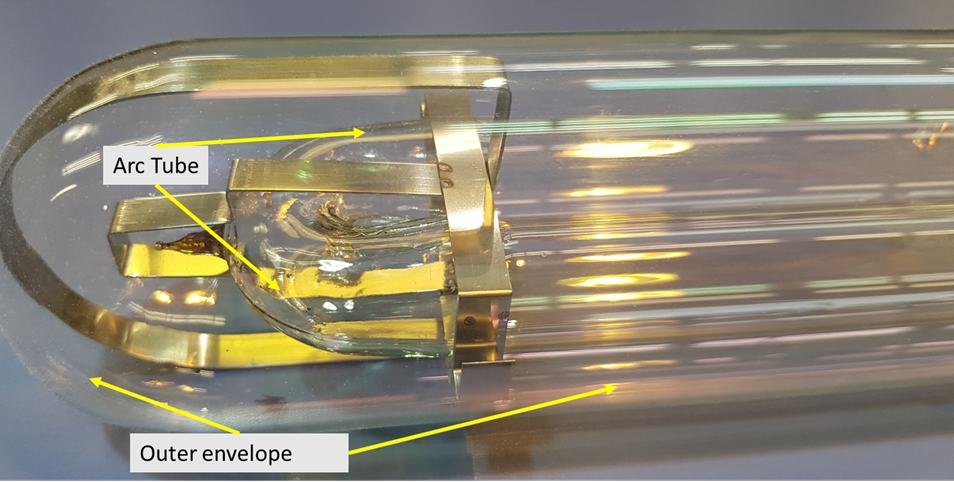29 Low Pressure Sodium Lamps
The lamp is constructed around a U-shaped arc tube, which is surrounded by a heat reflecting outer glass envelope. The arc tube is thus twice the length of the lamp. Cathodes similar to those used in fluorescent lamps are located at each end of the arc tube. The arc tube contains a neon starting gas and metallic sodium. The space between the arc tube and the outer glass envelope is evacuated to minimize heat loss and maintain the arc-tube temperature.

When the arc is first established, the neon starting gas gives it its initial orange glow, and as the metallic sodium heats up and slowly vaporizes electron collisions with the vapor produce visible light. The lamp takes between seven and ten minutes to reach full brightness, but will re-strike instantly upon a momentary power interruption and have an average life of approximately 18,000 hours. Over the life of the lamp, the light output remains constant or may even increase slightly and is generally unaffected by wide variations in ambient temperature.
Because there is only sodium inside the arc tube, the light produced is only a very narrow yellow portion of the visible spectrum, which just so happens to be close to the peak sensitivity of the human eye. This is why from our perspective the lamp seems to produce a large quantity of light. Unlike the fluorescent lamp, visible light comes directly from the arc tube and no phosphor is used on the glass.
LPS lamps contain high levels of sodium metal, which is a potentially hazardous substance. Improper disposal, such as simply tossing it in the regular trash, can cause the bulb to break and the sodium may ignite and start a fire. It is best practice to dispose of burned out LPS lamps properly and in accordance with local environmental regulations, such as at a recycling center, or at the very least, break the lamp in a bucket of water so that any reaction that takes place is contained.

